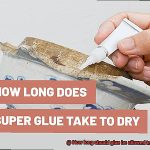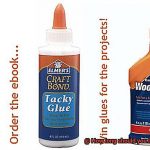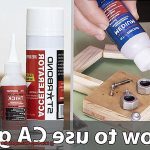If you’ve ever wrestled with stainless steel, you know how crucial it is to find an adhesive that can handle the heat and never let go. Today, we’re diving into the world of J-B Weld to see if it’s truly the Herculean hero it claims to be when it comes to bonding stainless steel.
J-B Weld has earned a reputation for being a tough-as-nails adhesive. But does it have what it takes to conquer stainless steel’s unyielding nature? Can it withstand the weight of heavy-duty projects without breaking a sweat?
In this blog post, we’re pulling back the curtain on J-B Weld’s secret sauce for bonding stainless steel. We’ll dish out all the juicy details, from its unique composition to real-life stories straight from the trenches. So grab your safety goggles and buckle up as we embark on a wild adventure to uncover just how strong J-B Weld really is on stainless steel.
What is J-B Weld?
Contents
- 1 What is J-B Weld?
- 2 Factors that Affect the Strength of J-B Weld on Stainless Steel
- 3 Surface Preparation for Maximum Bonding Strength
- 4 Applying J-B Weld to Stainless Steel
- 5 Curing Time for Optimal Strength
- 6 Advantages of Using J-B Weld on Stainless Steel
- 7 Limitations of Using J-B Weld on Stainless Steel
- 8 Reinforcing Measures for Special Applications
- 9 Conclusion
J-B Weld is the unrivaled adhesive when it comes to bonding and repairing stainless steel. Known as the “original cold weld,” this two-part epoxy adhesive has earned a reputation for its exceptional strength, versatility, and reliability. Whether you’re a DIY enthusiast or a professional, J-B Weld is the go-to solution for achieving durable and long-lasting bonds on stainless steel surfaces.
In this article, we will explore the properties, features, and benefits of J-B Weld, as well as provide useful tips for successful application.
Unleashing Unrivaled Strength:
The defining feature of J-B Weld is its incredible tensile strength. When mixed in equal parts, the resin and hardener create a bond that can withstand significant force and pressure. This makes it an ideal choice for repairing or bonding stainless steel, renowned for its strength and durability.
Superior Adhesion for Reliable Bonds:
J-B Weld boasts excellent adhesion properties that allow it to bond effectively with stainless steel surfaces. It forms a strong molecular bond with the metal, creating a permanent connection resistant to moisture, chemicals, and temperature fluctuations. Whether you’re working on automotive repairs or plumbing projects, J-B Weld ensures a reliable bond that stands the test of time.
Versatility at Its Finest:
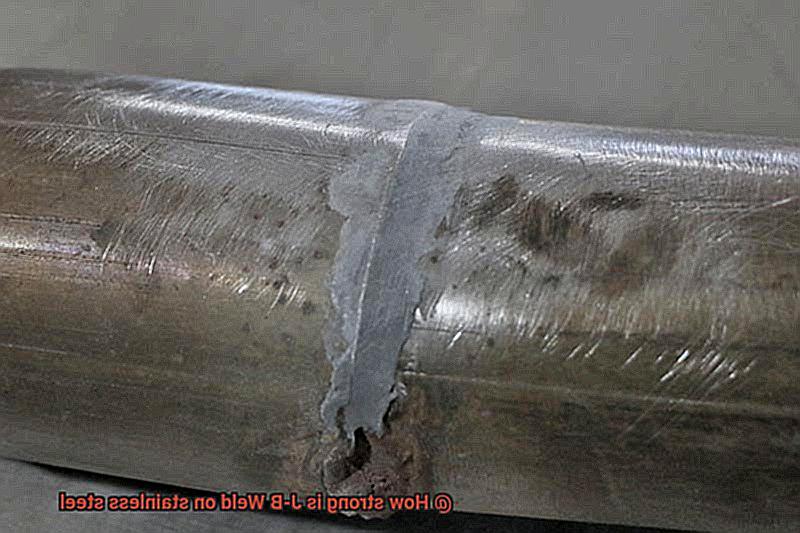
J-B Weld offers unparalleled versatility on various stainless steel surfaces. From flat sheets to pipes and even complex shapes, this adhesive adapts to different applications effortlessly. Whether you need to repair a crack in a stainless steel pipe or bond two metal pieces together, J-B Weld provides a reliable and long-lasting solution.
User-Friendly Application:
Applying J-B Weld is a breeze thanks to its user-friendly design. Packaged in separate tubes or syringes, precise measurements and easy mixing are made possible. Once combined, the adhesive can be directly applied to the stainless steel surface using a brush or spatula. With its quick-setting nature, J-B Weld reaches full strength within 24 hours.
Tips for Success:
To ensure optimal results, proper surface preparation is crucial when working with J-B Weld on stainless steel. Clean the surfaces thoroughly, removing any dirt, grease, or rust. Roughening the surface with sandpaper or a wire brush can enhance bonding strength. Following these steps will guarantee a bond that exceeds expectations.
Factors that Affect the Strength of J-B Weld on Stainless Steel
First and foremost, surface preparation is crucial. To achieve a strong bond, ensure that the stainless steel surface is clean, dry, and free from any contaminants like oil, grease, or rust. Use a degreaser or alcohol-based solvent to remove any residue, and consider using sandpaper or a wire brush to eliminate rust and corrosion. By properly preparing the surface, you’re maximizing the chances of optimal adhesion.
The mixing ratio of J-B Weld is another critical factor. This two-part epoxy adhesive consists of a resin and a hardener. It’s essential to follow the manufacturer’s instructions and mix the resin and hardener in the recommended proportions. Deviating from these ratios can result in an incomplete reaction, weakening the bond. So be meticulous in measuring and mixing.
Next up is the application technique. Apply an even layer of adhesive on both surfaces to be bonded, ensuring proper contact between them. Applying consistent pressure during the curing process is also important for a strong bond. Follow the recommended application technique provided by the manufacturer to maximize bond strength.
Curing time and temperature also play a significant role. Allow sufficient time for the adhesive to cure completely after application. Curing time varies depending on factors like temperature and humidity. Higher temperatures generally accelerate the curing process, but it’s crucial to observe the recommended curing conditions specified by the manufacturer for optimal strength.
The design of the joint being bonded matters too. A larger surface area provides more bonding points, increasing the overall strength of the bond. Proper alignment and good mechanical interlocking contribute to a stronger bond as well.
Lastly, consider environmental factors. Temperature fluctuations, exposure to moisture or chemicals, and mechanical stresses can impact the long-term durability and strength of the bond. Selecting the appropriate variant of J-B Weld that offers resistance to specific environmental conditions can ensure a stronger bond for your specific application.
Surface Preparation for Maximum Bonding Strength
Surface preparation is a crucial step in achieving maximum bonding strength with J-B Weld on stainless steel. By following the necessary steps, you can ensure a strong and durable bond. Here are the key aspects of surface preparation:
- Clean the surface: Before applying J-B Weld, it is essential to remove any oils, greases, dirt, or rust from the stainless steel surface. Use a solvent or degreaser to clean the surface thoroughly. Soak a cloth in the solvent and wipe the surface until it is clean.
- Dry the surface: After cleaning, allow the stainless steel surface to dry completely. Moisture can compromise the bonding strength of J-B Weld, so ensure that the surface is dry before proceeding.
- Remove rust spots: If there are any rust spots on the stainless steel surface, they should be removed. Use sandpaper or a wire brush to gently scrub away the rust until the surface is smooth and free from any loose particles.
- Roughen the surface: To enhance adhesion, lightly scuff the stainless steel surface using sandpaper or an abrasive pad. The goal is to create a slightly roughened texture that will improve the bond between J-B Weld and stainless steel. Avoid removing too much material from the surface.
- Mix J-B Weld: Thoroughly mix the two components of J-B Weld according to the instructions provided by the manufacturer. The mixing ratio is crucial for achieving optimal bonding strength.
- Apply J-B Weld: Evenly apply the mixed adhesive onto the prepared stainless steel surface, ensuring that it covers the entire area where bonding is desired. Use a steady hand to achieve a smooth and consistent application.
- Clamp the surfaces: To create a strong and secure bond, firmly clamp the bonded surfaces together using clamps, weights, or any suitable method that applies consistent pressure on the joint. This will help ensure maximum adhesion.
- Allow for curing time: It is essential to allow sufficient time for J-B Weld to fully cure before subjecting the bonded stainless steel to any stress or load. The curing time may vary depending on the specific product used, so refer to the manufacturer’s instructions for accurate curing times.

Applying J-B Weld to Stainless Steel
When it comes to bonding metals, including the mighty stainless steel, J-B Weld is the adhesive of choice. This two-part epoxy adhesive is known for its exceptional strength and durability, making it perfect for repairing broken parts or creating something new. But how do you apply J-B Weld to stainless steel? Let’s dive in and find out.
First and foremost, preparation is key. Before applying J-B Weld, it’s crucial to clean the surface of the stainless steel with a degreaser. This will remove any dirt, oil, or grease that could hinder adhesion. Once the surface is squeaky clean, it’s time to roughen it up a bit. Grab some sandpaper or a wire brush and give the stainless steel a gentle scuffing. This helps create a rough texture that enhances the bond between the adhesive and the metal.
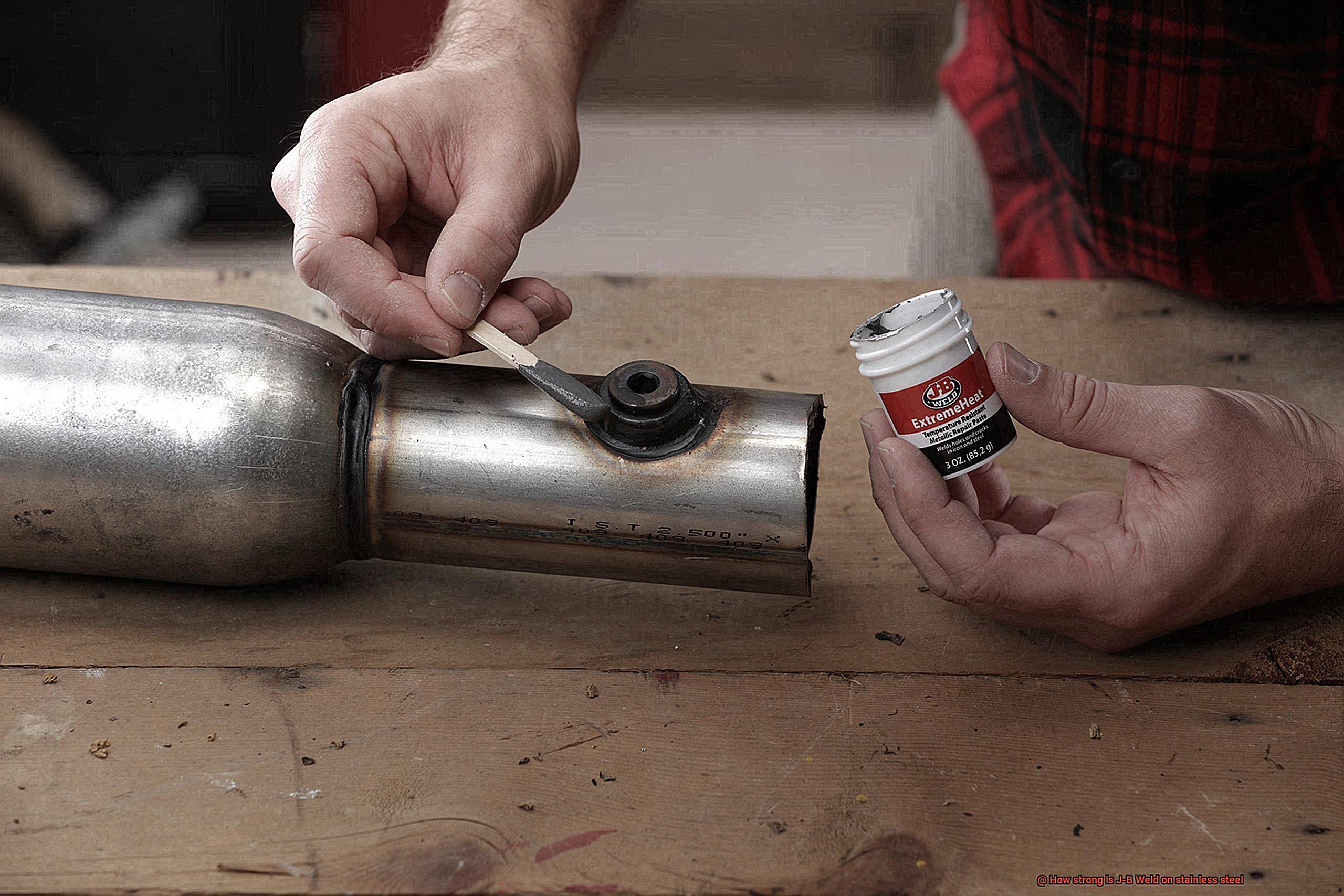
Now that your stainless steel is prepped and ready, let’s mix up some J-B Weld. The adhesive comes in two parts – the resin and the hardener. It’s essential to mix them in equal proportions for a proper bond. Follow the instructions on the packaging to ensure you get the right ratio. Once mixed, apply the J-B Weld to the stainless steel using a putty knife or a similar tool. Spread it evenly over the surface, making sure to cover every nook and cranny.
Now comes the waiting game. Give J-B Weld enough time to cure and harden. The exact curing time can vary depending on factors like temperature and humidity, so be sure to consult the product instructions for specific guidelines. Once fully cured, J-B Weld forms an incredibly strong bond with stainless steel that can withstand high temperatures and heavy loads.
It’s important to note that while J-B Weld provides excellent bonding strength on its own, there are other factors that can affect the final strength of the bond. Proper surface preparation, careful application, and ideal curing conditions all play a role in achieving the best results. In some cases, using additional support like mechanical fasteners may be recommended for added strength and stability.
Curing Time for Optimal Strength
Unleashing the Power of J-B Weld: The Art of Curing Time for Optimal Strength on Stainless Steel
Greetings, fellow DIY enthusiasts and stainless steel conquerors. Today, we embark on a mesmerizing journey into the depths of J-B Weld’s secrets, unraveling the enigma behind achieving unparalleled strength when bonding stainless steel. So, grab your tools and prepare for an epic battle against feeble bonds and flimsy repairs.
Why does curing time hold such paramount importance when utilizing J-B Weld on stainless steel? I shall elucidate this mystery for you:
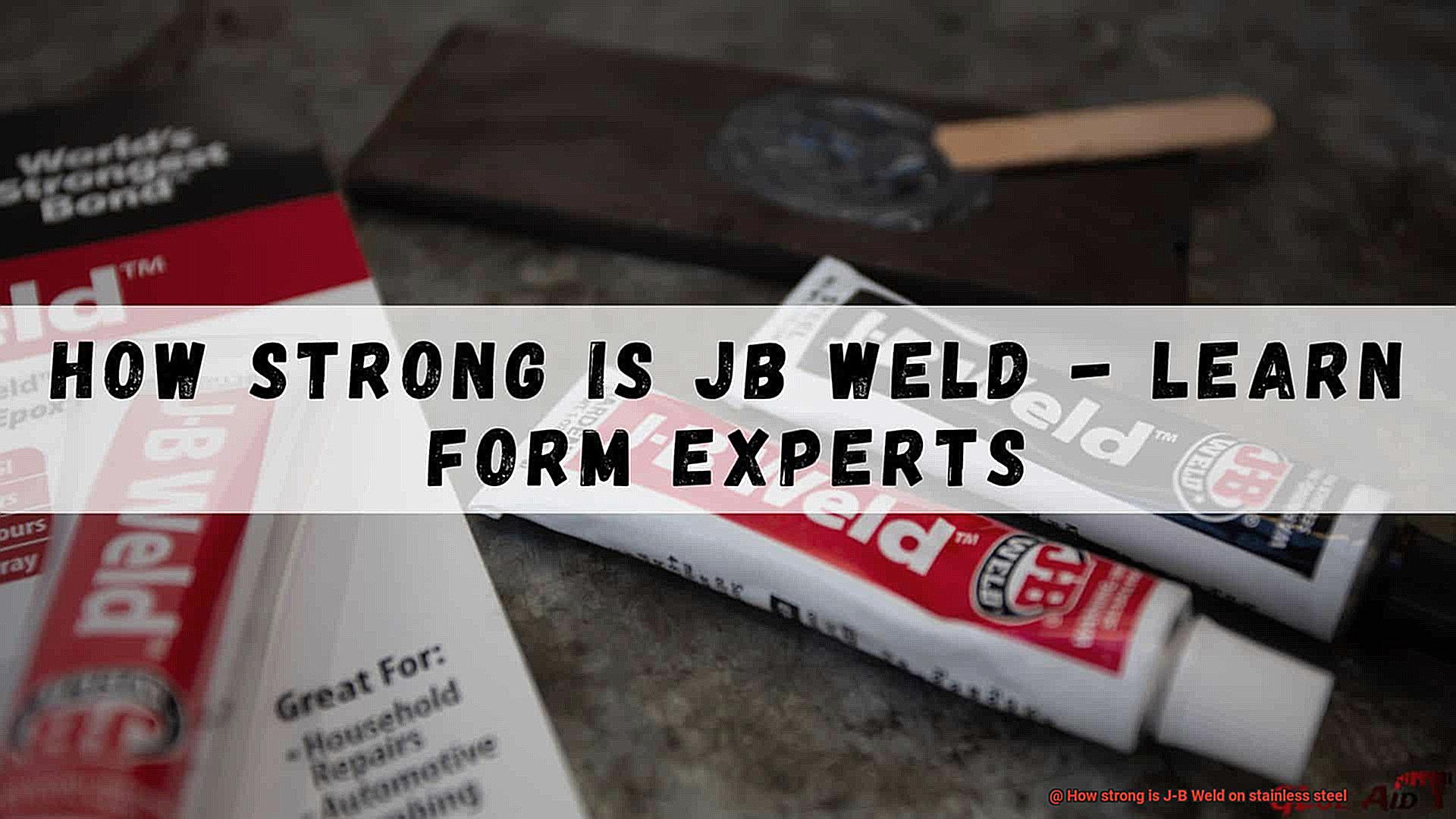
The Marvels of Chemical Transformation:
During the curing process, J-B Weld undergoes a magnificent metamorphosis. A liquid or gel-like substance transmutes into a solid material through the enchanting crosslinking of molecules. This ethereal alchemy yields a bond that is not merely robust but also harmoniously cohesive.
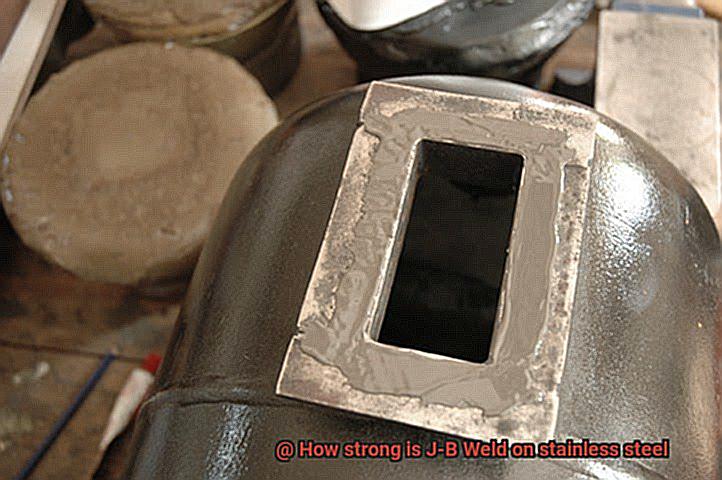
Unveiling the Potential of Maximum Strength:
To unlock the full potential of J-B Weld’s strength, it is imperative to grant it sufficient time to harden completely and develop its ultimate bonding prowess. While it may solidify within a few hours, the journey towards its zenith strength may necessitate a longer duration. Thus, patience becomes an indispensable virtue on this quest.
The Capricious Whims of Environmental Factors:
Let us not underestimate the capricious nature of environmental elements. Temperature, humidity, and adhesive layer thickness all conspire to influence the curing time. Higher temperatures fan the flames of the process, accelerating it with fervor. Conversely, lower temperatures mire it in sluggishness. Complying with the manufacturer’s instructions regarding curing time and temperature requirements is an essential commandment if one seeks to reap the desired rewards.
Now that we grasp the significance of curing time, allow me to unveil some pro tips to help you achieve optimal strength:
The Sacred Art of Compliance:
Always abide by the manufacturer’s instructions regarding curing time and temperature requirements for J-B Weld on stainless steel. These sacred guidelines are meticulously crafted to ensure the birth of the most formidable bond strength.
The Patience of Sages:
Though it may tempt you to hasten towards utilizing your freshly bonded parts, I implore you to resist such urges. Bestow upon J-B Weld ample time to cure fully, typically at least 24 hours, before subjecting it to substantial stress or load. Patience shall be your virtue, dear warrior.
The Power of Pressure:
To augment the strength of your bond, consider harnessing the might of pressure. Apply it lovingly or embrace the assistance of clamps to hold the parts together during the curing process. This technique shall serve as a catalyst, enhancing the bond’s solidity and forging an indomitable connection.
In conclusion, in the realm of stainless steel bonding, the significance of curing time cannot be undermined. By allowing J-B Weld sufficient time to cure, you unlock its true potential and unleash its superpower—unassailable strength. So, as you embark upon your next stainless steel project, remember to cultivate patience, heed instructions faithfully, and witness J-B Weld’s enchantment unfurl. Together, we shall achieve legendary results that withstand the test of time and conquer every challenge that dares cross our path.
Advantages of Using J-B Weld on Stainless Steel
This incredible product offers a range of advantages that make it the go-to choice for all your stainless steel bonding needs. Let’s dive into the amazing benefits of using J-B Weld on stainless steel.
First and foremost, J-B Weld boasts an exceptional bonding strength. With a tensile strength of up to 5,000 PSI, it can withstand immense pressure and force without breaking or coming apart. Trust J-B Weld to create long-lasting, durable bonds on your stainless steel projects.
Versatility is another key advantage of J-B Weld. It works on both smooth and rough surfaces, making it suitable for a wide range of applications in various industries. Whether you need to repair a broken stainless steel component or join different pieces together, J-B Weld has got you covered.
Stainless steel often faces high temperatures in automotive, industrial, and household appliances. Luckily, J-B Weld is formulated to withstand these extreme conditions. It can handle temperatures up to 550°F (287°C), ensuring that your bond remains strong even in the hottest environments.
Corrosion resistance is a crucial characteristic of stainless steel, and J-B Weld enhances this property. By forming a protective barrier on the surface, J-B Weld prevents moisture, chemicals, and other corrosive agents from reaching the metal. Prolong the lifespan of your stainless steel components and ensure their performance remains unaffected by corrosion.
Applying J-B Weld is a breeze. It comes in two separate components – a resin and a hardener – which you mix together before use. Once mixed, simply apply the adhesive directly to the stainless steel surface using a brush or spatula. With its relatively long working time, you have plenty of time to position and align the parts before the adhesive sets.
Last but not least, J-B Weld offers a cost-effective solution for bonding stainless steel components. It is significantly cheaper and requires fewer tools and equipment compared to welding or soldering. Accessible to both professionals and DIY enthusiasts, J-B Weld eliminates the need for specialized skills or expensive equipment.
Limitations of Using J-B Weld on Stainless Steel
J-B Weld has earned a reputation as the go-to adhesive for bonding stainless steel, thanks to its exceptional strength, versatility, and durability. However, even this superhero adhesive has its limitations. In this blog post, we will explore the boundaries of using J-B Weld on stainless steel, empowering you to make informed decisions and unlock your stainless steel creations with confidence.
Temperature Resistance:
While J-B Weld boasts impressive heat resistance, it does have its limits. Extreme temperatures exceeding 500 degrees Fahrenheit can cause the adhesive to degrade or lose its strength. So, while it outperforms most adhesives in terms of heat resistance, it’s crucial to consider the temperature requirements of your application.
Compatibility with Stainless Steel Grades:
Stainless steel comes in different grades, each with its own unique properties. Some grades may have low surface energy or contain elements that pose challenges for adhesives like J-B Weld. It is essential to check the compatibility of your stainless steel grade with J-B Weld before diving into your project.
Surface Preparation:
The secret to a strong bond with J-B Weld lies in meticulous surface preparation. Stainless steel surfaces must be thoroughly cleaned, degreased, and roughened before applying the adhesive. Neglecting this step can result in weak bonds or total failure.
Curing Time:
Using J-B Weld on stainless steel requires patience. The adhesive typically takes 15-24 hours to fully cure and reach its maximum strength. If you’re working on a time-sensitive project or find yourself in a rush, J-B Weld may not be the ideal adhesive for you.
Impact Resistance:
While undeniably strong, J-B Weld may not possess the same level of impact resistance as other joining methods like welding or mechanical fasteners. Applications subjected to constant vibrations or heavy loads may require alternative bonding solutions.
Permanent Bond:
Once J-B Weld cures, it becomes a permanent adhesive. Disassembling or repositioning bonded parts becomes challenging and may result in damage. If future adjustments or repairs are anticipated, exploring other adhesive options is recommended.
Reinforcing Measures for Special Applications
Ready to take your stainless steel projects to the next level? Get ready to dive into the world of reinforcing measures for special applications when using J-B Weld on stainless steel. These measures are like the secret weapons that will make your bonds stronger, more durable, and capable of withstanding extreme conditions.
- Mechanical Fasteners: The sidekicks to J-B Weld, mechanical fasteners like screws, bolts, or rivets add an extra layer of strength. By combining their power with J-B Weld, you create a bond that’s stronger than Batman’s grip on justice. These fasteners distribute the load and prevent any weak spots in the bond, ensuring your stainless steel creation stands the test of time.
- Surface Preparation: Just as you wouldn’t start a battle without training, don’t start bonding stainless steel without prepping the surface. Clean it up with a suitable solvent to remove dirt or grease that could weaken the bond. Then roughen up the surface with sandpaper or a wire brush for extra grip. This ensures J-B Weld has a solid foundation to work its magic on.
- Fiberglass Reinforcement: When facing high temperatures or harsh environments, fiberglass reinforcement is your secret weapon. By adding fiberglass cloth or mat to your J-B Weld application, you’re giving your bond a suit of armor. This extra layer of strength and durability will help it withstand all the challenges it may face.
- Chemical-Resistant Variants: For chemical-resistant missions, consider using specialized epoxy variants of J-B Weld. These formulations are like the Hulk of adhesives, taking on acids, solvents, and chemicals without breaking a sweat. Whether you’re in a lab or a chemical plant, these variants have got your back.
- Structural Adhesives: When you need an adhesive as strong as Thor’s hammer, turn to structural adhesives designed for metal bonding. These heavyweights offer high strength and incredible bonding properties. Combine them with J-B Weld, and you’ll create a bond that’s virtually indestructible.
LGCJGNkEpy8″ >
Conclusion
J-B Weld is known for its exceptional strength when it comes to bonding stainless steel.
This remarkable adhesive forms a bond that is incredibly strong and durable, making it ideal for a wide range of applications. Whether you’re repairing a broken stainless steel tool or creating something entirely new, J-B Weld will provide the strength and reliability you need.
When you choose J-B Weld, you can trust that your stainless steel project will be held together with unmatched strength and precision.




